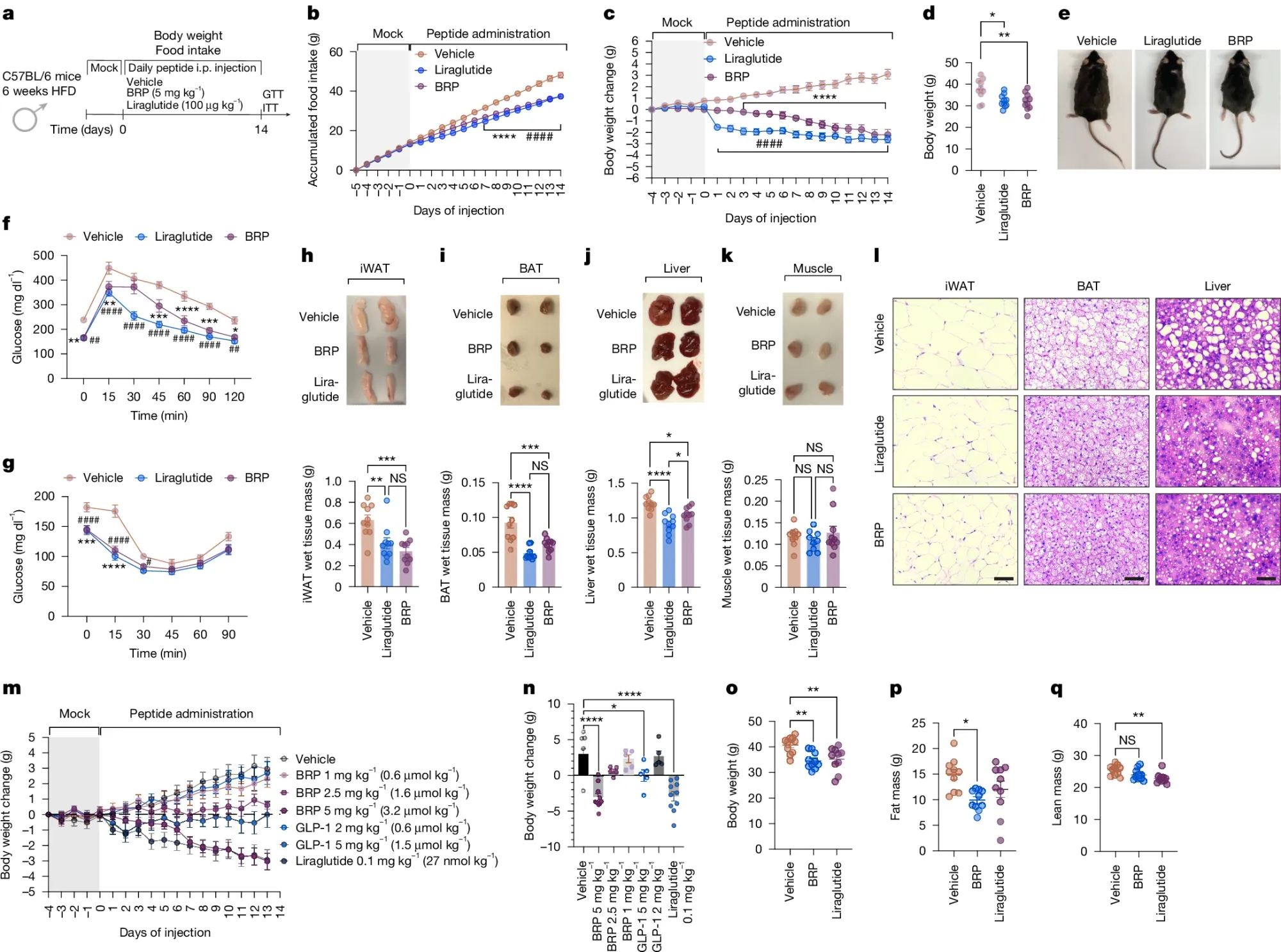In silico identification of a side effect free weight loss peptide
The quest to find better tolerated weight loss drugs is well on its way and computational drug discovery has already identified at least one promising candidate!

GLP-1 Receptor Agonists have been all over popular media these last few years.
They’re life savers for diabetics or the severely obese because they promote the secretion of insulin and the proper regulation of blood sugar.
But our bodies do naturally produce glucagon-like peptide - 1 (GLP-1), which is an incretin, hormones secreted by cells in our intestines, pancreas and brain in response to the detection of nutrients.
This results in the binding of GLP-1 to the GLP-1 Receptor (GLP-1R) leading to the release of insulin and other hormones important for regulating blood sugar.
Our natural GLP-1 only acts for 1-2 minutes, so the duration of its effects are limited because it’s quickly broken down in our blood stream.
But we realized that GLP-1s could also be powerful drugs and the first of these drugs to get approved, like Liraglutide (Victoza), lasted a couple of hours and needed to be taken daily.
And because these are peptide based drugs, that meant patients had to inject themselves with something every day which isn’t ideal.
This changed with the introduction of semaglutide (Ozempic) and tirzepatide (Mounjaro) which are once a week injections.
These drugs do come with significant side effects, though, and can cause nausea, vomiting, and aversion to food.
So, the race has been on to find compounds with similar effects on weight loss, but without all of the potential negative side effects.
One good place to start that search is within ourselves.
That's because our bodies are full of small peptides that are the result of prohormone cleavage - GLP-1 and insulin are both examples!
Thinking that maybe there are other important secreted peptides that act on the same pathways as GLPs, researchers took a computational approach (regular expressions) to predict peptides based on the presence of protein cleavage sites.
They developed a program called PeptidePredictor to find secreted proteins that might be cleaved into bioactive peptides and then took some of those peptides and screened them for biological activity
The peptides were chosen “on the basis of metabolic tissue location, size and uncharacterized function.”
They found one, BRP, a 12 residue peptide derived from BRINP2 that increased activity 10-fold and when tested in mice and minipigs they showed that BRP reduces food intake but doesn’t cause nausea or food aversion.
In the figure above, they also showed that BRP can reverse obesity. a) Design of the study with mice on a high fat diet b,c,d,e) BRP and Liraglutide (Victoza) reduce food intake and weight gain, Treated mice also had better glucose (f) and insulin tolerance (g), Treatment reduced white (h) and brown (i) fat. It also reduced liver weight (j) but not muscle mass (k). m,n,o,p,q) the most effective dose of BRP was 5mg/kg.
They went on to show that BRP only activates the hypothalamus and not the brain stem which could explain why it doesn’t have the same negative side effects as GLPs.
They also showed that BRPs effects occur independent of the GLP-1 receptor.
While this peptide appears to be well tolerated, more research needs to be done to identify which receptor it acts through and any other possible side effects that weren’t observed in this study.
But this work does highlight the utility of computational drug discovery in identifying compounds that can have a therapeutic benefit.
